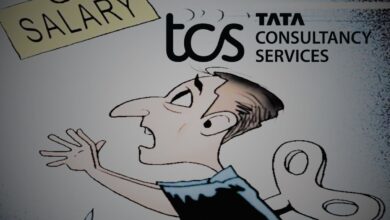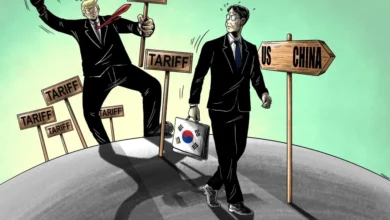Cash Strapped Dunzo Resorts To Layoffs, August Clicks Highest Layoffs This Year As 27000 Techies Fired Across Major Companies
One defining feature of the current economy is the wave of layoffs sweeping across various industries. The global markets continue to struggle with economic uncertainty, companies are being forced to make tough decisions and layoffs have become an unfortunate yet necessary strategy for many. The trend is not confined to a single sector but has spread across technology, finance, retail and manufacturing, mirroring the widespread impact of challenging times. Likewise, Dunzo once valued at Rs. 6200 crore is today cash-strapped and has taken to layoffs as a strategy.

The wave of layoffs continues to intensify, with August marking the highest number of job cuts since January 2024. Data from layoffs.fyi reveals that 27,065 employees were let go across 44 companies last month, a significant increase from July, when 39 companies reduced their workforce by 9,051.
What has increased the numbers is major reductions from tech giants Intel and Cisco.
Intel Cost Cutting Initiative
Intel on August 1 announced plans to cut approximately 15000 jobs, a big number that represents 15% of its workforce. Pat Gelsinger, CEO, stated that this move represents part of Intel’s strategy to achieve a $10 billion cost-saving target by 2025.
Gelsinger acknowledged that these layoffs would cause hardship however, he stressed the necessity of such bold actions to address high costs and slim profit margins, especially in light of a tougher-than-expected financial outlook for the latter half of 2024.
Cisco Executes Second Round of Layoffs
Likewise, Cisco Systems too has announced its second round of layoffs for the year on August 14, which would impact nearly 5,900 employees or 7% of its workforce.
This follows an earlier round of layoffs in February, where the company cut 4,000 jobs; the move aligns with Cisco’s strategic pivot towards rapidly growing technology sectors, such as AI and cybersecurity.
Infineon, IBM, and SkipTheDishes Join the Trend
German chipmaker Infineon revealed on August 5 that it will eliminate 1,400 jobs globally, with an additional 1,400 positions being moved to countries with lower labor costs.
The decision is part of Infineon’s “Step Up” cost-saving initiative, aimed at addressing the dual challenges of declining revenue and rising operational expenses.
IBM also joined the layoff trend, planning to shut down its China R&D operations, which is expected to affect over 1,000 jobs.
The decision comes as IBM finds waning demand for its hardware and difficulties in growth markets like China; however, IBM has assured that it will continue to support clients in the Greater China region.
Additionally, Canadian online food delivery service SkipTheDishes and its parent company Just Eat Takeaway.com have announced layoffs, cutting around 800 jobs which includes 100 positions in the Canadian market and 700 in operations.
CEO Paul Burns stated that these layoffs are part of a necessary restructuring to ensure the company’s sustainability amid a challenging market environment.

Cash-Strapped Dunzo Slashes Workforce to 50 While Seeking Capital
Coming to startups, Dunzo, which is backed by Reliance Retail, has reduced its workforce by 150 employees, leaving the e-commerce delivery company with just 50 staff members in its core supply and marketplace teams.
The Bengaluru-based company is desperately trying to recover profits to address its financial obligations, including salaries for current and former employees and vendor payments, even as it searches for capital to ensure its survival.
It was reported in May that Dunzo was nearing the completion of a funding round of $22-25 million, combining equity and debt from new and existing investors, in an effort to secure the company’s long-term stability; however, the funding process has been delayed as potential investors remain cautious about the company’s growth trajectory.
It has been reported that in an email sent to employees, Dunzo assured that pending salaries, severance, leave encashment, and other dues would be paid as soon as funds were available.
Earlier, the company had also explored entering complementary business lines that are financially viable and operationally light. Dunzo remains hopeful that its business-to-business segment will lead to a turnaround by September.
Mounting Liabilities and Cash Flow Issues
According to reports, Dunzo still owes salaries and final settlements to several former employees; in September, the company partnered with payroll services firm OneTap to manage salary disbursements for certain months.
“We are doing everything we can to finalize this transaction as quickly as possible. It’s a complex process with multiple stages, and I apologize for the ongoing difficulties,” Biswas said in an internal message to employees in May.
He expressed a desire to resolve the salary issues soon, hoping that May would be the last month of managing this crisis.
Despite earlier assurances in April that Dunzo aimed to achieve its “first full profitable year” in 2024-25 and expand its team, cash flow problems persist.
To date, Dunzo has raised nearly $470 million; Reliance Retail is the largest shareholder with a 25.8% stake, followed by Google and venture investor Lightbox.
After a $240-million fundraise led by Reliance’s retail venture in 2021, Dunzo introduced quick commerce under Dunzo Daily; however, the cash-intensive nature of the business quickly drained resources.
The company then shifted focus to its merchant services, Dunzo for Business, and its customer-to-customer parcel delivery service to improve its financial position.
Dunzo, which was on track to become a unicorn—a company valued at $1 billion or more—in 2022, reported a significant net loss of ₹1,802 crore for FY23. As of January 2022, the company was valued at approximately $775 million.

What’s Driving the Increase in Layoffs?
The surge in layoffs is largely due to aggressive cost-cutting measures companies are adopting to manage a challenging financial environment.
While several factors contribute to the surge in layoffs, the most immediate cause is the economic slowdown, driven by a combination of inflationary pressures, rising interest rates, and geopolitical instability.
Thus, many companies are facing reduced consumer demand and increased operational costs, and are scaling back to preserve their financial health.
Moreover, the post-pandemic recovery has been uneven; while some sectors have bounced back robustly, others, particularly those heavily reliant on discretionary spending, continue to struggle.
The imbalance has led to a recalibration of workforce needs, with companies trimming roles that are no longer deemed essential.
At the same time, technological advancements are also playing a role in the layoffs- automation and artificial intelligence are being seen as a viable tool and businesses are increasingly relying on technology to streamline operations, often at the expense of human labor.
The shift, while driving efficiency, has led to job losses in areas where automation can replace manual tasks.
Of course, the human cost of these layoffs is being heavily felt as workers who have lost their jobs face immediate financial uncertainty, particularly in an economic environment where finding new employment is proving to be challenging.
Again the psychological toll is also significant, as individuals are now faced with the loss of income, status, and purpose especially for those in mid-career or later stages of their professional life, the prospect of re-entering the job market can be particularly daunting.
Younger workers and those freshly out of college are not immune either and have to accept the harsh reality that their careers have stalled before they even had a chance to truly begin.
The Broader Economic Implications
The ripple effects of widespread layoffs have also seeped into negative economic growth as unemployment rises, and consumer spending—a key driver of economic growth—has decreased.
This could lead to further contractions in the economy, creating a vicious cycle that is difficult to break. Consumer confidence has been greatly impacted as fear of job loss has led to more cautious financial spending, further slowing economic recovery.
As a result, companies, too, have become more risk-averse, delaying investments and expansions until the economic outlook becomes clearer.





